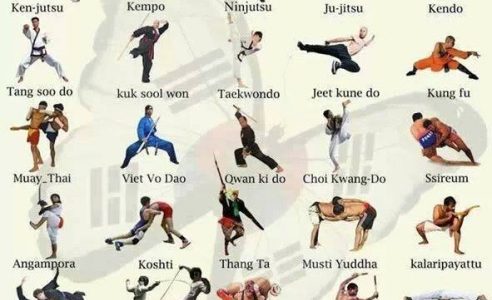Untangling The Secret Of Numerous Fighting Style Self-Controls: A Guide To Karate, Taekwondo, And More
Untangling The Secret Of Numerous Fighting Style Self-Controls: A Guide To Karate, Taekwondo, And More
Blog Article
Web Content Composed By-Becker Bondesen
Are you tired of sensation overwhelmed by the huge world of fighting styles? With a lot of designs to choose from, it can be simple to get lost in a sea of punches, kicks, and strange names. Yet fear not!
This discussion will debunk the different fighting styles designs, taking you on a trip from the effective strikes of Karate to the dynamic kicks of Taekwondo. Prepare to reveal the origins, methods, and approaches behind these ancient art types.
So, tighten your belt and prepare to start an enlightening exploration right into the exciting world of fighting styles.
Origins of Martial Arts Styles
The beginnings of martial arts styles can be traced back to ancient civilizations and their demand for protection and combat methods. Throughout history, various cultures created their very own unique approaches of battling, each with its own set of methods and philosophies.
In China, for example, fighting styles styles such as Kung Fu and Tai Chi were established as a means of protection and enhancing physical and mental health.
In Japan, the samurai warriors created designs like Martial arts and Judo, focusing on technique, precision, and proficiency of the body.
Similarly, in Korea, Taekwondo became a fighting style highlighting high kicks, fast motions, and psychological determination.
These early worlds laid the structure for the diverse variety of fighting styles styles that exist today, each with its very own abundant background and cultural value.
Strategies and Educating Techniques
To understand martial arts styles, practitioners have to learn different techniques and training techniques.
global martial arts - ch.025 are the particular motions and activities used in battle, such as strikes, kicks, throws, and obstructs. Different martial arts styles have their very own distinct collection of techniques that professionals need to grasp via extensive training.
Training techniques differ depending upon the design, yet they usually entail a mix of physical fitness, drills, sparring, and types.
Physical fitness is crucial to build strength, adaptability, and endurance. Drills assist practitioners improve their strategies and boost their rate and accuracy.
Competing permits specialists to practice their techniques in a controlled, sensible setting. Kinds, likewise known as kata, are deliberate sequences of movements that aid experts establish muscular tissue memory and emphasis.
Ideologies and Principles
Exploring the ideologies and principles of fighting styles designs can offer you with a much deeper understanding of your selected self-control. Each fighting style has its very own one-of-a-kind approach and set of directing principles that shape the way it's exercised.
For example, Karate highlights technique, respect, and self-control. It shows specialists to concentrate their body and minds, enabling them to safeguard themselves while maintaining a sense of inner tranquility.
On the other hand, Taekwondo puts a solid focus on rate, dexterity, and flexibility. Its concepts are rooted in the tenets of politeness, integrity, determination, self-control, and unbeatable spirit.
Link Website that you have actually checked out the origins, methods, and philosophies of numerous martial arts designs, you have a deeper understanding of these old techniques.
Envision a young karate pupil, exercising with unwavering decision and emphasis, breaking through boards with a powerful punch.
https://www.recordnet.com/story/news/local/2023/03/17/stockton-self-defense-workshop-for-asian-women/70000879007/ and toughness required to master a fighting style, advising us that with technique and determination, anything is feasible.
